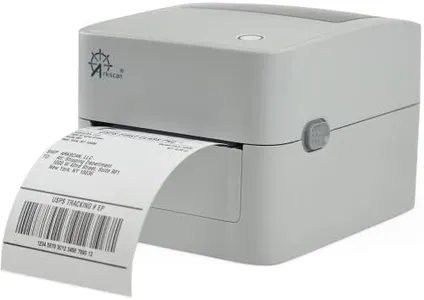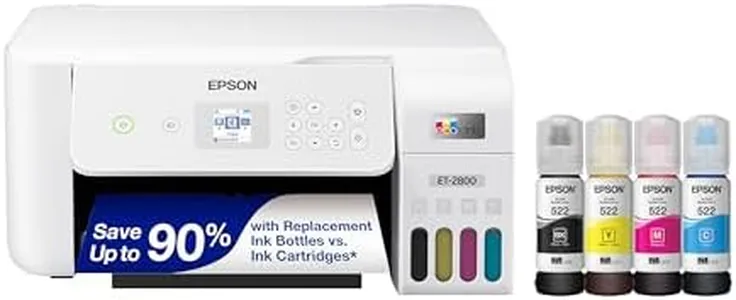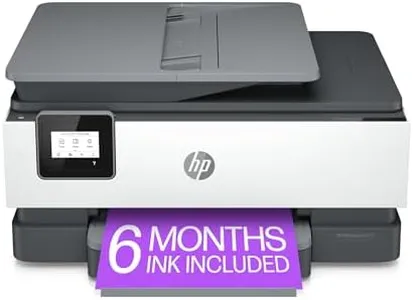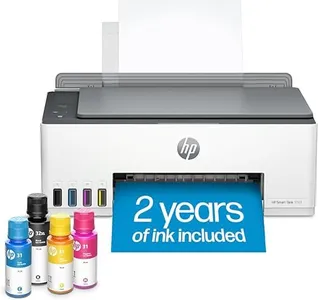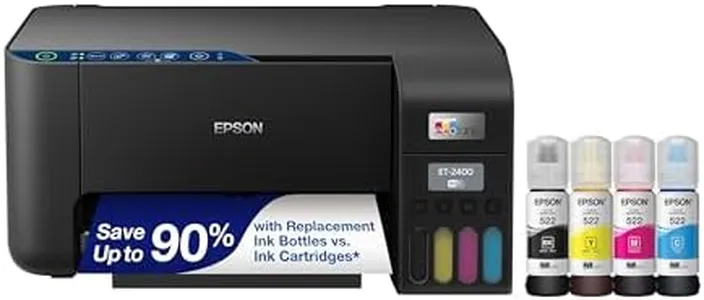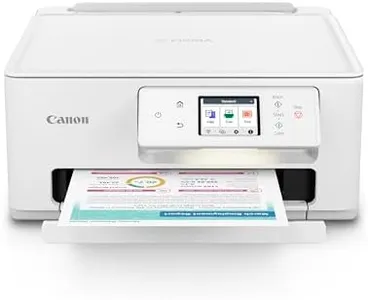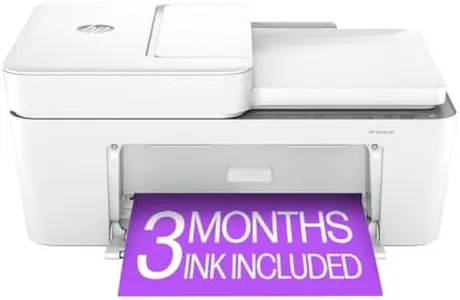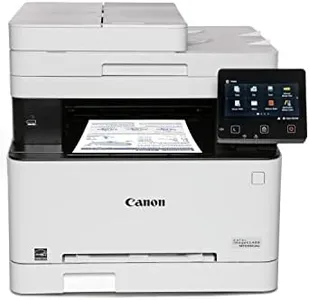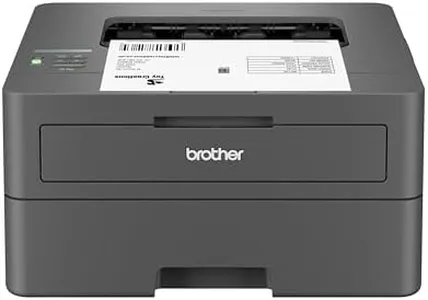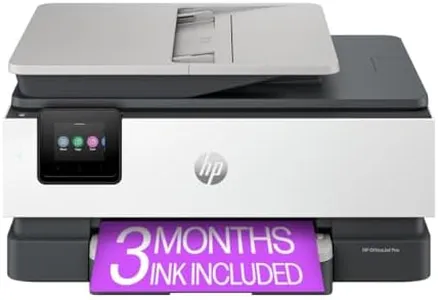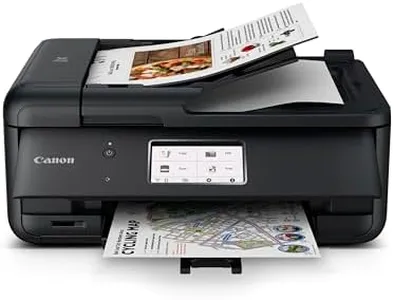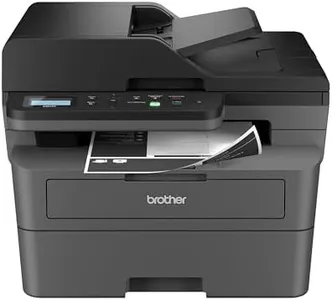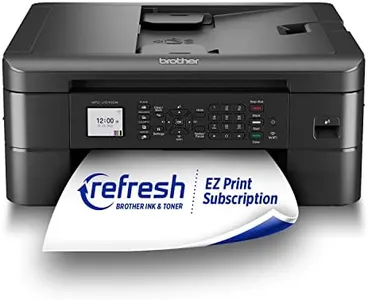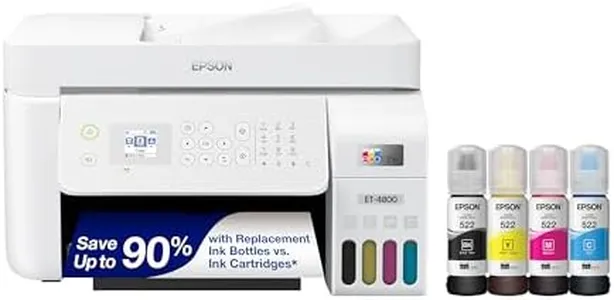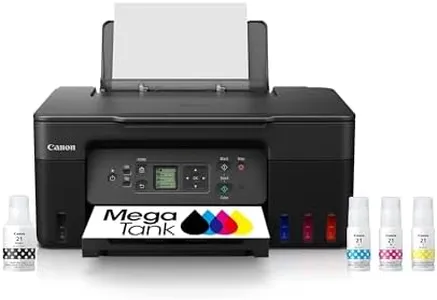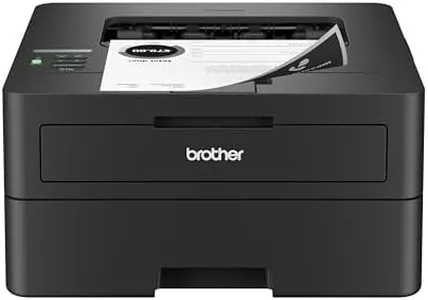10 Best Wireless Home Printers 2025 in the United States
Our technology thoroughly searches through the online shopping world, reviewing hundreds of sites. We then process and analyze this information, updating in real-time to bring you the latest top-rated products. This way, you always get the best and most current options available.

Our Top Picks
Winner
Epson EcoTank ET-2800 Wireless Color All-in-One Cartridge-Free Supertank Printer with Scan and Copy – The Ideal Basic Home Printer - White, Medium
The Epson EcoTank ET-2800 is designed as a cost-effective solution for home printing needs, standing out with its innovative cartridge-free system. Its high-capacity ink tanks can save you up to 90% on ink costs compared to traditional cartridges, making it an economical choice for those who print frequently. With the ability to produce up to 4,500 pages in black and 7,500 in color, it significantly reduces the hassle of running out of ink often, as it comes with enough ink to last up to two years for typical home usage.
In terms of print quality, the ET-2800 impresses with its Micro Piezo technology, delivering sharp text and vibrant color photos on various paper types. It also includes multifunction capabilities, combining printing, scanning, and copying in one device, which is convenient for home office setups. The printer is light, weighing in at only 8.8 pounds, making it easy to place or move around as needed.
On the downside, the print speed of 10 pages per minute for monochrome and 5 pages per minute for color is somewhat slower than some competitors. Additionally, while the printer has both wired and wireless connectivity, it lacks automatic duplex (double-sided) printing, which may be a drawback for users looking for efficiency in paper usage. The manual duplex option requires more effort, which might not suit everyone’s needs. The initial investment might be higher than traditional inkjet printers; however, the long-term savings and reduced waste could make it worthwhile for many users. The Epson EcoTank ET-2800 is a solid choice for families or individuals looking for a reliable, economical, and versatile home printer.
Customer Highlights
A summary of real customer reviews to highlight what shoppers are saying!HP OfficeJet 8015e Wireless Color All-in-One Printer, 6 months of Instant Ink included
The HP OfficeJet 8015e Wireless Color All-in-One Printer is designed with small businesses and home offices in mind, offering a blend of functionality and convenience. One of its standout features is the six months of Instant Ink included, allowing you to print up to 700 pages a month; this can lead to significant savings on ink in the long run. The printer’s print quality is commendable, boasting a maximum resolution of 4800 x 1200 DPI, making it suitable for professional color documents, brochures, and presentations. Additionally, its fast print speeds of up to 18 pages per minute for black and 10 for color enhance productivity.
Connectivity options are robust with dual-band Wi-Fi, which is self-healing, ensuring a stable connection. The HP Smart App adds to its appeal, allowing mobile printing, scanning, and copying directly from your smartphone. Security features are also integrated, providing basic encryption and password protection, which is essential for any office environment.
There are some drawbacks to consider. The printer uses original HP cartridges exclusively, which may limit your options and could lead to higher long-term ink costs after the initial six-month period. The printer is also relatively large and weighs around 18 pounds, which might be a concern for those with limited space. While the automatic document feeder is handy, it may not be as efficient as some higher-end models, particularly for heavier workloads. The HP OfficeJet 8015e is a solid choice for users looking for a versatile, reliable all-in-one printer for everyday tasks, especially for those who print frequently in color and appreciate mobile printing capabilities.
Customer Highlights
A summary of real customer reviews to highlight what shoppers are saying!HP Smart Tank 5101 Wireless All-in-One Ink Tank Printer with 2 years of ink included,Print, scan, copy, Best-for-home, Refillable ink tank (1F3Y0A)
The HP Smart Tank 5101 Wireless All-in-One Ink Tank Printer is designed for families needing to print high volumes of color documents. It offers good print quality with a maximum color resolution of 4800 x 1200 DPI, making it suitable for both text and photo prints. One of its standout features is the inclusion of 2 years' worth of ink, which can handle up to 6,000 pages right out of the box, providing significant savings on ink costs.
The printer supports wireless and USB connectivity, making it easy to print from various devices, including smartphones and laptops. The HP Smart App enhances usability by allowing you to print, scan, and copy directly from your phone. The setup is straightforward, and the self-healing Wi-Fi ensures a reliable connection. However, the print speed is relatively slow, with 12 pages per minute for black and 5 pages per minute for color, which might not be ideal for users requiring faster printing. The printer's paper handling capacity is modest, with a maximum input of 100 sheets and no automatic duplex printing, requiring manual intervention for double-sided prints.
The device is compact and energy-efficient, but its lack of advanced features like automatic duplexing and higher print speeds may limit its appeal to more demanding users. The refillable ink system is user-friendly and mess-free, making maintenance simple. Additionally, HP's commitment to sustainability with forest conservation efforts adds an eco-friendly dimension to this printer. While it excels in affordability and basic functionality, those needing high-speed or volume capabilities might need to look elsewhere.
Customer Highlights
A summary of real customer reviews to highlight what shoppers are saying!Buying Guide for the Best Wireless Home Printers
Choosing the right wireless home printer can make a big difference in your daily tasks, whether you need it for work, school, or personal projects. The key is to understand your specific needs and how different features of printers can meet those needs. Here are some important specifications to consider when selecting a wireless home printer, along with explanations to help you make an informed decision.FAQ
Most Popular Categories Right Now
